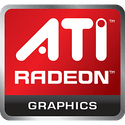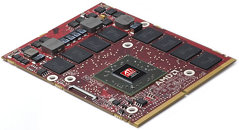Mar 29th, 2025 02:53 EDT
change timezone
Latest GPU Drivers
New Forum Posts
- TechPowerUp Screenshot Thread (MASSIVE 56K WARNING) (4263)
- EVGA 3070ti hotspot is too high 107.7° (4)
- What are you playing? (23298)
- How is my CPU's temperature? (20)
- Issues with RTX4090 FE waterblock (Bitspower) (16)
- geekbench6 scores (55)
- Will you buy a RTX 5090? (456)
- The TPU UK Clubhouse (25994)
- Someone run games on AMD BC-250 under Linux * Cut down PS5 die to 6 CPU cores 24 GPU cores for use in crypto mining (77)
- (omg)vflash | Fully Patched nvflash from X to Ada Lovelace [v5.780] (356)
Popular Reviews
- Sapphire Radeon RX 9070 XT Pulse Review
- Samsung 9100 Pro 2 TB Review - The Best Gen 5 SSD
- ASRock Phantom Gaming B850 Riptide Wi-Fi Review - Amazing Price/Performance
- Assassin's Creed Shadows Performance Benchmark Review - 30 GPUs Compared
- be quiet! Pure Rock Pro 3 Black Review
- Sapphire Radeon RX 9070 XT Nitro+ Review - Beating NVIDIA
- ASRock Radeon RX 9070 XT Taichi OC Review - Excellent Cooling
- Palit GeForce RTX 5070 GamingPro OC Review
- Pulsar Feinmann F01 Review
- ASRock Phantom Gaming B860I Lightning Wi-Fi Review
Controversial News Posts
- AMD RDNA 4 and Radeon RX 9070 Series Unveiled: $549 & $599 (260)
- MSI Doesn't Plan Radeon RX 9000 Series GPUs, Skips AMD RDNA 4 Generation Entirely (142)
- Microsoft Introduces Copilot for Gaming (123)
- AMD Radeon RX 9070 XT Reportedly Outperforms RTX 5080 Through Undervolting (118)
- NVIDIA Reportedly Prepares GeForce RTX 5060 and RTX 5060 Ti Unveil Tomorrow (115)
- Over 200,000 Sold Radeon RX 9070 and RX 9070 XT GPUs? AMD Says No Number was Given (100)
- NVIDIA GeForce RTX 5050, RTX 5060, and RTX 5060 Ti Specifications Leak (96)
- Retailers Anticipate Increased Radeon RX 9070 Series Prices, After Initial Shipments of "MSRP" Models (90)
Thursday, January 7th 2010

AMD Unveils World’s First DirectX 11 Compliant Mobile Graphics
AMD today introduced its lineup of next-generation DirectX 11-capable ATI Mobility Radeon Premium graphics, including ATI Mobility Radeon HD 5870 graphics, the highest performance graphics for notebooks in the world.1 The entire family of DirectX 11-capable graphics consists of ATI Mobility Radeon HD 5800, ATI Mobility Radeon HD 5700, ATI Mobility Radeon HD 5600 and ATI Mobility Radeon HD 5400 series graphics. This top-to-bottom family of Direct 11-capable notebook graphics introduces compelling new features including ATI Eyefinity multi-display technology, bringing powerful visual gaming and computing innovation to the notebook PC. Notebooks featuring the new graphics technology are previewed at the 2010 Consumer Electronics Show (CES) in the VISION Experience Center, located in the Grand Lobby (GL-8 and GL-10) of the Las Vegas Convention Center.
"Six months ago AMD claimed the title of undisputed technology leader in desktop graphics, and now we also offer powerful mobile graphics processors for notebooks to go with our market leadership in that segment," said Rick Bergman, senior vice president and general manager, Products Group, AMD. "Once again, AMD changes the game both in terms of performance and experience. AMD innovations now give notebook users full DirectX 11 support, eye-opening ATI Eyefinity technology, superb HD multimedia capabilities, and ATI Stream technology designed to help optimize Windows 7 notebook performance."The next-generation family of DirectX 11-capable ATI Mobility Radeon HD 5000 series graphics represents a powerful upgrade for OEMs to existing and upcoming 2009 AMD Mainstream and 2nd Generation Ultrathin notebook platforms, as well as next-generation "Danube" mainstream and "Nile" ultrathin notebook platforms scheduled to launch in the first half of 2010. These graphics innovations are designed to let you:
Accelerate your mobile performance:
"ASUS has worked closely with AMD for years to ensure that we're collaborating to bring the newest and most compelling notebook technologies to our customers first, and with the DirectX 11-capable family of ATI Mobility Radeon HD 5000 series graphics and the ASUS G73 and new N series of notebooks, we're continuing that leadership," said P.C. Wang, Corporate Vice President & General Manager, Notebook Business Unit, System Business Group, ASUS.
"Today's consumers demand more of their notebooks, and to meet those changing needs, MSI continually strives to offer a wide variety of notebooks infused with leading technologies," said Sam Chern, Notebook Marketing Director, MSI. "Next-generation ATI Mobility Radeon Premium graphics are a perfect solution, introducing industry first features such as DirectX 11 gaming support that help us better address the full range of customers at affordable prices."
Notebooks with DirectX 11-capable ATI Mobility Radeon HD 5000 series graphics are scheduled to be available in the first half of 2010.
Detailed specifications can be found here.
"Six months ago AMD claimed the title of undisputed technology leader in desktop graphics, and now we also offer powerful mobile graphics processors for notebooks to go with our market leadership in that segment," said Rick Bergman, senior vice president and general manager, Products Group, AMD. "Once again, AMD changes the game both in terms of performance and experience. AMD innovations now give notebook users full DirectX 11 support, eye-opening ATI Eyefinity technology, superb HD multimedia capabilities, and ATI Stream technology designed to help optimize Windows 7 notebook performance."The next-generation family of DirectX 11-capable ATI Mobility Radeon HD 5000 series graphics represents a powerful upgrade for OEMs to existing and upcoming 2009 AMD Mainstream and 2nd Generation Ultrathin notebook platforms, as well as next-generation "Danube" mainstream and "Nile" ultrathin notebook platforms scheduled to launch in the first half of 2010. These graphics innovations are designed to let you:
Accelerate your mobile performance:
- The DirectX 11-capable ATI Mobility Radeon HD 5000 series graphics lineup is the first and only notebook graphics technology to support DirectCompute 11, allowing users to take full advantage of Windows 7, the first compute-capable operating system.
- Enjoy new features, functionality and improved performance in top media, entertainment and productivity applications made possible by ATI Stream technology.
- ATI Mobility Radeon HD 5400 series (and higher) graphics fully support both DirectX 11 and OpenCL, enabling broad application acceleration support today and tomorrow.
- ATI Eyefinity multi-display technology enables super high resolution panoramic computing for notebooks, allowing mobile users to seamlessly harness up to six monitors for improved gaming, productivity, and entertainment.
- Enjoy enhanced multimedia capabilities through Unified Video Decoder 2 technology, for upscaling beyond 1080p and dual 1080p decoding of Blu-ray video and HD streams.
- Benefit from state-of-the-art home theatre entertainment technologies including HDMI 1.3a Dolby TrueHD and DTS-HD Master Audio, and advanced display quality from HDMI 1.3a Deep Color & x.v.Color for a theater-class entertainment experience.
- Enjoy intense gaming performance, unrivalled visual quality, and an overall superior HD gaming experience on HD-capable monitors with DirectX 11 (as compared to DirectX 10.1).
- Realize the ultimate in game compatibility, as the DirectX 11 API was developed on AMD graphics hardware and all initial DirectX 11 games were developed or continue to be developed on AMD's DirectX 11-capable hardware.
- More than 20 DirectX 11 games are currently in development, with gamers already enjoying the incredible DirectX 11 experience offered by titles such as EA Phenomic's BattleForge, GSC Gameworld's S.T.A.L.K.E.R.: Call of Pripyat, and Codemasters' Colin McRae: DiRT 2.
- The next-generation DirectX 11-capable family of ATI Mobility Radeon HD 5000 series graphics is two generations ahead of DirectX 10.0 support found in competing mobile graphics solutions.
- Benefit from four times the performance-per-watt efficiency over the last two generations of ATI Mobility Radeon Premium graphics thanks to improved processor design and a new 40nm process
- Experience dramatically lower idle power, saving battery power when the graphics processor isn't needed
- Next-generation Vari-Bright technology used for optimizing notebook display brightness delivers up to 50 percent power savings over the previous generation's software based approach
- Platform independent graphics switching technology helps to save power while offering efficient switching options
- GDDR5 Advanced Memory Support delivers double the memory bandwidth over previous generation AMD discrete graphics
"ASUS has worked closely with AMD for years to ensure that we're collaborating to bring the newest and most compelling notebook technologies to our customers first, and with the DirectX 11-capable family of ATI Mobility Radeon HD 5000 series graphics and the ASUS G73 and new N series of notebooks, we're continuing that leadership," said P.C. Wang, Corporate Vice President & General Manager, Notebook Business Unit, System Business Group, ASUS.
"Today's consumers demand more of their notebooks, and to meet those changing needs, MSI continually strives to offer a wide variety of notebooks infused with leading technologies," said Sam Chern, Notebook Marketing Director, MSI. "Next-generation ATI Mobility Radeon Premium graphics are a perfect solution, introducing industry first features such as DirectX 11 gaming support that help us better address the full range of customers at affordable prices."
Notebooks with DirectX 11-capable ATI Mobility Radeon HD 5000 series graphics are scheduled to be available in the first half of 2010.
Detailed specifications can be found here.
Mar 29th, 2025 02:53 EDT
change timezone
Latest GPU Drivers
New Forum Posts
- TechPowerUp Screenshot Thread (MASSIVE 56K WARNING) (4263)
- EVGA 3070ti hotspot is too high 107.7° (4)
- What are you playing? (23298)
- How is my CPU's temperature? (20)
- Issues with RTX4090 FE waterblock (Bitspower) (16)
- geekbench6 scores (55)
- Will you buy a RTX 5090? (456)
- The TPU UK Clubhouse (25994)
- Someone run games on AMD BC-250 under Linux * Cut down PS5 die to 6 CPU cores 24 GPU cores for use in crypto mining (77)
- (omg)vflash | Fully Patched nvflash from X to Ada Lovelace [v5.780] (356)
Popular Reviews
- Sapphire Radeon RX 9070 XT Pulse Review
- Samsung 9100 Pro 2 TB Review - The Best Gen 5 SSD
- ASRock Phantom Gaming B850 Riptide Wi-Fi Review - Amazing Price/Performance
- Assassin's Creed Shadows Performance Benchmark Review - 30 GPUs Compared
- be quiet! Pure Rock Pro 3 Black Review
- Sapphire Radeon RX 9070 XT Nitro+ Review - Beating NVIDIA
- ASRock Radeon RX 9070 XT Taichi OC Review - Excellent Cooling
- Palit GeForce RTX 5070 GamingPro OC Review
- Pulsar Feinmann F01 Review
- ASRock Phantom Gaming B860I Lightning Wi-Fi Review
Controversial News Posts
- AMD RDNA 4 and Radeon RX 9070 Series Unveiled: $549 & $599 (260)
- MSI Doesn't Plan Radeon RX 9000 Series GPUs, Skips AMD RDNA 4 Generation Entirely (142)
- Microsoft Introduces Copilot for Gaming (123)
- AMD Radeon RX 9070 XT Reportedly Outperforms RTX 5080 Through Undervolting (118)
- NVIDIA Reportedly Prepares GeForce RTX 5060 and RTX 5060 Ti Unveil Tomorrow (115)
- Over 200,000 Sold Radeon RX 9070 and RX 9070 XT GPUs? AMD Says No Number was Given (100)
- NVIDIA GeForce RTX 5050, RTX 5060, and RTX 5060 Ti Specifications Leak (96)
- Retailers Anticipate Increased Radeon RX 9070 Series Prices, After Initial Shipments of "MSRP" Models (90)

58 Comments on AMD Unveils World’s First DirectX 11 Compliant Mobile Graphics
Both reference boards, both with digital PWM circuitry.
More charts here.
andSource
Basicly its just a stripped Geforce 3, with misleading name , called Geforce 4, its not a Geforce 2. Both where budgetlines anyway, offering low/mid-end performance for gaming back in the days.
it had nothing to do with the geforce 3, and was based on the GF2 core.